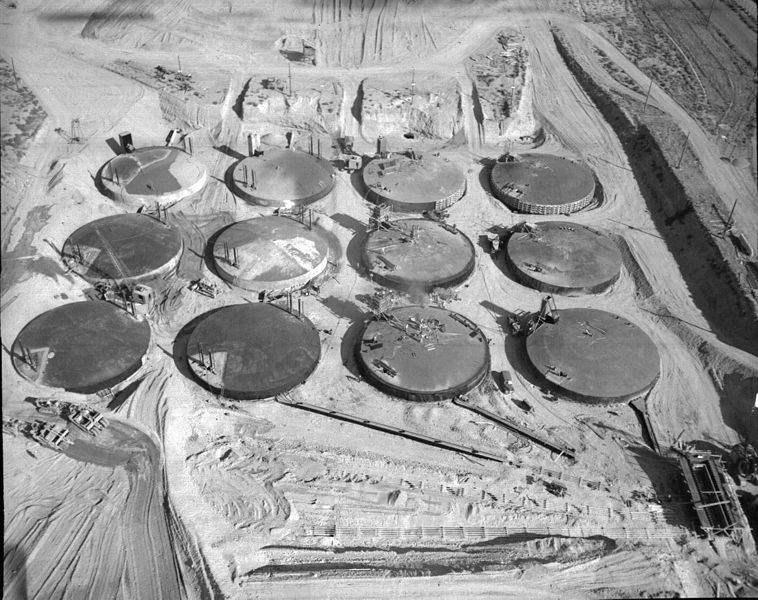The Hanford nuclear facility contains fifty three million gallons of high-level radioactive and chemical waste. These wastes were generated when corrosive chemicals were used to dissolve spent fuel rods to retrieve plutonium. The result was hot radioactive corrosive liquid was. The waste is stored near the Columbia River in huge underground tanks in what is called the Hanford Tank Farm. There are one hundred and seventy seven tanks and most of them are well past their design lifetime. One third of the tanks are known to have leaked some of their contents. Estimates of the amount leak vary from a million gallons to six million gallons. In addition to being highly radioactive and toxic, the material in the tanks also generates gases that must be vented in order to prevent explosions.
One hundred and fourty nine single-shell tanks were built between 1943 and 1964. During World War II, there was a shortage of stainless steel so they used cheaper and weaker carbon steel on tanks build during the war. Even after the war when the supply of stainless steel returned to normal levels, they continued to use carbon steel to build the tanks. The twenty double-shell tanks were built between 1977 and 1986 and they were also constructed with carbon steel. The tanks were designed to last 20 years and were never intended as a permanent storage system. The waste is acidic and highly corrosive. It has been eating away at the lining of the tanks since they were filled. One third of the tanks have been eaten thought completely in places and they are leaking the waste into the environment.
The operators at the site monitor the conditions in the tanks and move waste from older single-shell tanks to twenty eight newer double-shelled tanks when required but space in the new tanks is limited. Robotic systems have been developed to handle the extremely dangerous and toxic waste but they are not always employed and workers are endangered when required to deal with the waste. The single-shelled tanks are considered "closed" when ninety nine percent of the waste has been removed. To date, only seven of the one hundred and fourty nine old tanks have been closed.
The only way to permanently stabilize the waste is to create glass logs to contain the waste in a solid form. This process is called vitrification. A vitrification plant is being built that will be able to process some of the waste but not all of it.
It is not known exactly what is happening at the Hanford Tank Farm because the government has denied the severity of the problem for years and has never adequately funded a complete analysis of the site. A number of clean-up projects have been proposed, funded and started over the years but the site is still the most serious nuclear waste problem in the United States. The main priority of the cleanups is to minimized further leakage from the aging tanks and to stabilize the waste to prevent catastrophic explosions. Three hundred million dollars a year are being spent to operate the Tank Farm.
